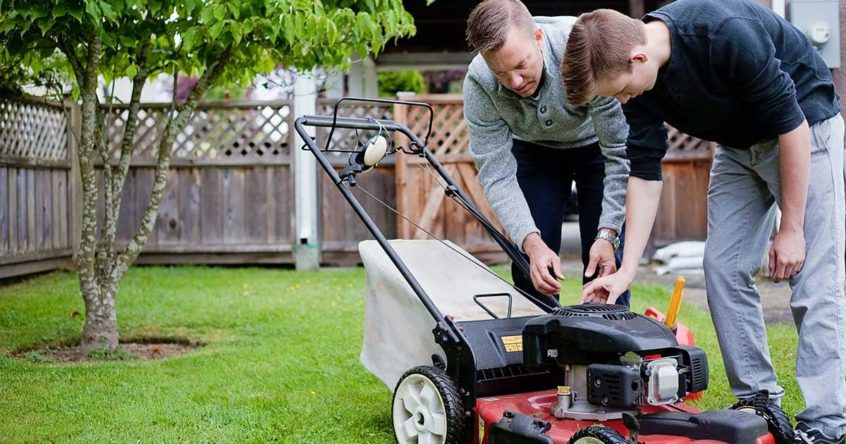A mower that’s not properly cared for will have years taken off its life and have a lot more problems in the short run as well. A little fast, simple maintenance during the mowing season and before winter can make a huge difference.
Keeping the blade sharp as well as a well-cared for engine, will keep your mower humming for years to come. This guide will teach you how to keep your lawn mower in tip-top shape throughout the year.

Keep it clean. After each use of the mower, give it a quick brushing off with a gloved hand or rag or whisk broom. After the mower has stopped running completely, reach under the deck with a gloved hand and brush off of caked grass under the deck and on the blade.

A couple of times a year, give the mower a good cleaning. With the gas tank empty, turn the mower on its side. Remove any debris that may be wrapped around the blade or caked up on the underside of the mower deck. Spray the underside of the mower deck hard with a garden hose to loosen dirt and dried-on grass. Scrub with a soft brush and soapy water. Then rinse.

Clean or replace the air filter once or twice a year. Replace paper filters when they look dirty (keep a few on hand). Plastic foam filters should be removed and washed with warm, soapy water. Air-dry thoroughly. Then work about 2 tablespoons of clean mower oil evenly across the filter to lightly coat it.

After you’ve used the mower for the last time at the end of the growing season, empty the fuel tank by letting the engine run until it is out of gas. Leave the gas tank empty until spring. With the gas tank empty, remove the oil fill cap (if applicable) and turn the mower over to drain the engine oil into a suitable container for recycling. If your mower has an oil drain plug, use that instead of turning the mower on its side. Refill the engine oil reservoir per your mower manufacturer’s recommendations and then replace the oil fill cap.

Once a year when you change your mower’s oil, replace the spark plug. Disconnect the spark plug wire and then remove the existing spark plug with a wrench or pliers. To ensure you purchase the right replacement plug, write down the code on your existing plug, consult your mower’s owner’s manual or just take the old plug with you when you go to purchase a new one. Screw in a new plug and reconnect the spark plug wire.

Keep the blade sharp. A dull mower blade cuts unevenly and shreds the tip of grass blades, which then turn brown and give a lawn a beige cast that makes it look dry. The ragged ends are also good entry points for disease.

